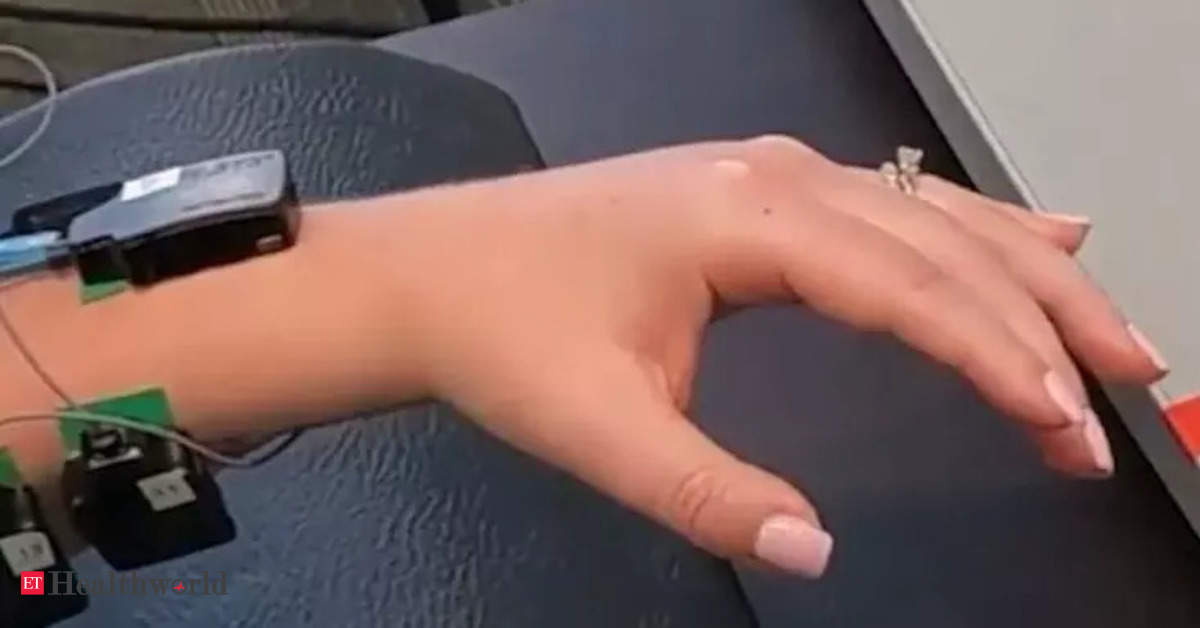New York: US researchers have used a device that stimulates the spinal cord to restore the arm and hand mobility in two stroke patientsallowing them to perform activities of daily living, such as using a fork to eat.
The new therapy, which is detailed in the journal Nature Medicine, was tested in two patients with moderate to severe strokes. motor deficiencies.
The technology uses an array of thin metal electrodes implanted on the surface of the spinal cord. Electrical impulses from the device stimulate neural circuits in the spinal cord, preparing them to receive movement signals from the brain. This involves muscles that have been weakened by a stroke, allowing patients to voluntarily raise their arm, make a fist and grasp household objects.
Researchers from the US National Institutes of Health found that continuous stimulation directed at the cervical sensory nerve roots of the spinal cord immediately improved strength, range of motion, and arm and hand function.
The stimulation also allowed the participants to perform complex tasks that require more skill and dexterity, such as using eating utensils and picking a lock, activities they hadn’t done in years.
Surprisingly, some benefits persisted for several weeks after device removal. This suggests that when combined with physical or occupational therapy, this stimulation-assisted approach could lead to more robust long-term improvements in motor function.
Recent studies have used spinal cord stimulation technology to treat chronic pain and restore leg movement after spinal cord injury.
Globally, one in four people over the age of 25 will have a stroke, and nearly three-quarters of these people will have long-lasting deficits in motor control in their arm and hand, leading to disability and enormous impact on health. daily life. There are no effective treatments for paralysis in the chronic stage of stroke, which begins six months after the initial stroke incident.
These findings provide a practical stimulation protocol to adapt an existing clinical technology to treat upper extremity paralysis after stroke. However, more research is needed to translate the therapy into broader clinical use.
